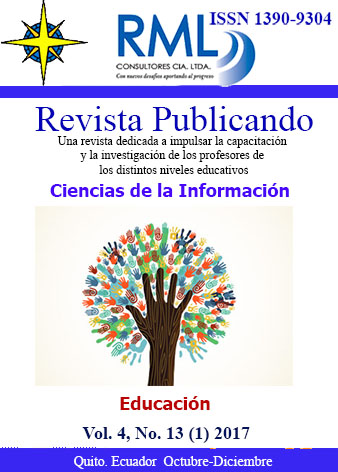Resumen
Phraseological units with a zoonym component are the focus of the given scientific research. The relevance of this study arouses little doubt, since zoo-phraseologisms are widely used among native speakers, but a person for whom German and English are foreign languages uses these units in his speech extremely rarely, as they are difficult to perceive, and their misuse can lead to failures in intercultural communication. In addition, this layer of language is considered not fully explored. In this regard, it is necessary to conduct a more detailed study considering phraseological units with zoonims, the attempt is presented in the following article.
The material of our research is the data of phraseological dictionaries of the German and English languages, stylistic and explanatory dictionaries, collections of commonly used proverbs in German and English.
As methods of research, discursive analysis, functional analysis, various methods of descriptive and comparative method have served.
The practical and theoretical significance of our research work is that the results of the study can be applied in the study of a foreign language for understanding the culture of native speakers.
Referencias
Alifirenko N.F. 2004.Teoriya yazyka. Vvodnyy kurs. -M. 368 s.
Davletbayeva D.N., Larionova E.S., Bashkirova K.A. 2016.Cultural interpretation of phraseological units in their occasional use // Modern Journal of Language Teaching methods. Special Issue (November). Pp. 164-169.
Gavrin S.G.1963. Izucheniye frazeologii russkogo yazyka v shkole. Posobiye dlya uchitelya. M. Uchpedgiz. 152 s.
Kulkova M.A., Rakhimova A.E., Zinecker T.2015. Hermeneutical analysis of paroemiological texts with semantics of permission // Journal of Language and Literature. V. 6. â„– 1. Pp. 297-300.
Kunin A.B. 1983.O frazeologicheskoy nominatsii // Frazeologicheskaya semantika: Sb. nauch. tr. M., . Vyp. 211.-ye. 88-100.
Mellado Blanco, 2009. Carmen :Theorie und Praxis der idiomatischen Wí¶rterbí¼cher. Tí¼bingen.
Raykhshteyn, A.D. 1981.Teksty lektsiy po frazeologii sovremennogo nemetskogo yazyka : Vopr. frazeol. semantiki / A. D. Binokhshteyn. - M. : B. i.
Rakhimova A.E., Sharipova A.V., Zaripova Z.M., Olegovich G.I. 2015.The realization of binary opposition joy/sorrow in contemporary german fiction discourse // Review of European Studies. V. 7. â„– 6. Pp. 70-76.
Varlamova E.V., Naciscione A., Tulusina E.A. 2016.A study on the phenomenon of collocations: Methodology of teaching English and German collocations to Russian students // International Journal of Environmental and Science Education. Volume: 11. Issue: 6. Pp: 1275 – 1284.
Varlamova E.V., Tulusina E.A., Zaripova Z.M., Gataullina V.L.2016. Lexical Semantic Field as One of the Keys to Second Language Teaching // Interchange. Volume: 48. Issue: 2. Pp: 183 – 193.
Verenich T.M. 2012.Cherty natsional'nogo kharaktera vo frazeologicheskoy kartine mira (na materiale frantsuzskogo i russkogo yazykov) (Tekst) // Filologiya i lingvistika v sovremennom obshchestve: materialy Mezhdunar. nauch. konf. (g. Moskva, may 2012 g.). ”” M.: Vash poligraficheskiy partner, S. 51-53.
Vinogradov V.S., 2001.Vvedeniye v perevodovedeniye (obshchiye i leksicheskiye voprosy). - M.: Izdatel'stvo instituta obshchego srednego obrazovaniya RAO.
Vinogradov V.V. 1977.Izbrannyye trudy. «Ob osnovnykh tipakh frazeologicheskikh yedinits v russkom yazyke ». Leksikologiya i leksikografiya. - M., - S. 140-161.
Usted es libre de:
Compartir — copiar y redistribuir el material en cualquier medio o formato
Adaptar — remezclar, transformar y construir a partir del material
La licenciante no puede revocar estas libertades en tanto usted siga los términos de la licencia
Bajo los siguientes términos:
Atribución — Usted debe dar crédito de manera adecuada, brindar un enlace a la licencia, e indicar si se han realizado cambios. Puede hacerlo en cualquier forma razonable, pero no de forma tal que sugiera que usted o su uso tienen el apoyo de la licenciante.
NoComercial — Usted no puede hacer uso del material con propósitos comerciales.
CompartirIgual — Si remezcla, transforma o crea a partir del material, debe distribuir su contribución bajo la lamisma licencia del original.
